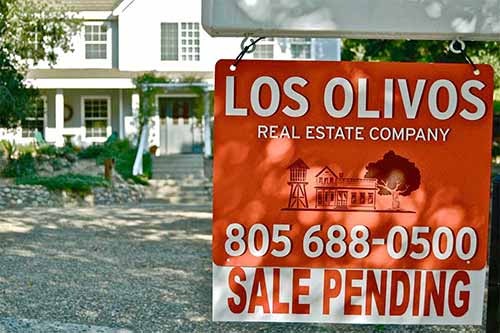


For the latest listings in our area, use our FlexMLS listing search.
This search is updated regularly and is a direct reflection of the Multiple Listing Service database.
Search Listings Now →
Honest, experienced agents are always welcome at Los Olivos Real Estate Co.
Call us at (805) 688-0500
Former President Biden left the white House for sunny Santa Ynez. What is this Kiani Preserve where he is staying?
Joe Kiani’s ranch is in the foothills of Santa Ynez, some 8,000 acres made up by acquiring 3,300 acres at one time known as Bar GO Ranch (for Gragg Orton) and another 4,674 acres once called Figueroa Mountain Ranch. Go out Brinkerhoff towards Edie Sedgwick’s old place, look for sharp dressed men with guns in black Suburbans.
Kiani is a medical equipment entrepreneur whose company Masimo is best known for the pulse oximeter. See the Forbes story here: https://www.youtube.com/watch?v=gRJLXxeTlS8.
Between the Bar GO sale for $26,001,500 on 6-18-07 and Kiani’s acquisition of Bar GO for $22 million in 2013, some optimists divvied up the underlying 18 parcels and tried to sell them off individually, without success. Big points to JK for sewing it back together along with Jean Claude Brouillet’s former Figueroa Mountain holdings, which had been purchased in 1999 by Goldman Sachs partner Fred Steck. (https://fredricsteck.com/about)
Read the Forbes article about it here:
https://www.forbes.com/sites/keithflamer/2020/06/30/outrageous-4700-acre-rancho-latigo-equestrian–ranch-lists-for-245-million-near-santa-barbara/
Kiani bought Steck’s property for either $12,000,000 or $21,000,000 in 2020, depending on who you ask, in either event a long chalk from the original asking price of $45 million. Two Compass agents reported it in our local MLS as “sold at auction off market” on November 6, 2020 for $21 million. The SB County Recorder booked the sale at $12 million on December 17, 2020. Maybe someone’s dyslexic. Steck called the property Rancho Latigo.
From the website; “The Kiani Preserve is an 8000 acre ranch in the Santa Ynez Valley which spans across the high hills and canyons nestled in the shadow of Figueroa Mountain. Rising to rocky peaks reaching over 3500′ in elevation, this place is at once idyllic and mercurial, embodying both timeless beauty and power. It is a living monument to what can be achieved when we allow nature to lead.”
https://kianipreserve.com
As the old tv show said, “There are a million stories in the naked city. This is one of them.” Strangers still leave photos and flowers on Edie Sedgwick’s grave in Ballard’s Oak Hill Cemetery. Read about her here: https://www.vanityfair.com/style/2017/12/andy-warhol-and-edie-sedgwick-a-brief-white-hot-and-totally-doomed-romance?srsltid=AfmBOorNfns3nlH4fHSqPWXXICONmWPy2cGDSdSWZqb48IsxGmUZejnS
Brouillet passed away in 2016. Read about his colorful life here: https://www.geni.com/people/Jean-Pierre-Brouillet/4826516457120061855)